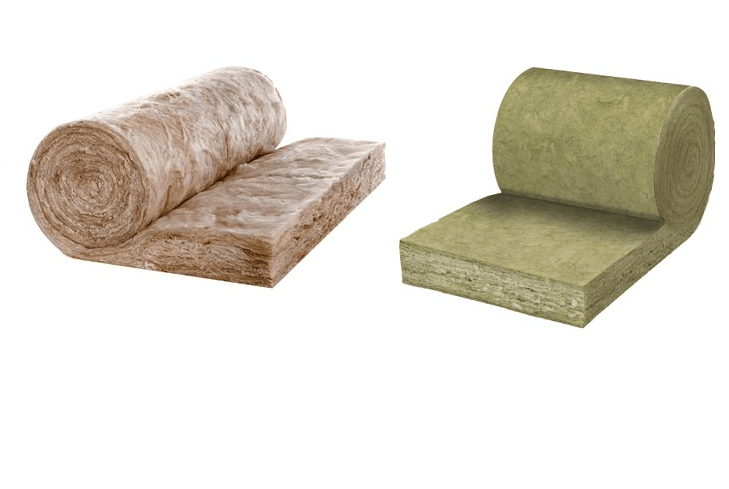With the continuous development of energy conservation in construction, the insulation and heat insulation of building structures have become an important part of energy conservation in construction, and a new field of research and application of energy-saving construction technology. In general, the roof and wall of the building should be insulated and insulated. There are three types of wall insulation, namely internal wall insulation, external wall insulation and core wall insulation. The inner wall and core insulation of the inner wall are usually made of inorganic materials, while the outer wall insulation is made of inorganic and organic materials.
The following are the top 10 most commonly used thermal insulation materials in construction:
1. Mineral wool
Mineral wool mainly refers to rock wool, slag cotton, glass cotton, aluminum silicate cotton and its products, with the characteristics of small volume density, low thermal conductivity, non-combustion, heat resistance, anti-freeze, anti-corrosion, non-moth, good chemical stability and so on.
Mineral wool is the most important insulation material for industry and construction in Europe. It has a good application perspective in heating buildings in the western and northern areas of the Netherlands.
2. Heat insulating foam
Insulation cotton refers to thermal insulation materials obtained by treating waste cotton fabrics (such as jeans) with non-toxic, fire retardant and dewormed boron. Insulation cotton is suitable for keeping the temperature in the house in cold climates. The insulation cotton is flat and the installation method is similar to that of bamboo fiber insulation. No need to wear respirators and safety gear when installing insulation wool, nor warning labels required by the product.
3.Reflective insulating material
The reflective building insulation material is mainly composed of a transparent resin and a high-reflectivity filler, and the commonly used high-reflectivity refrigerant is a glass hollow microbead. Reflective building insulation is commonly used for roof trusses, walls or floor joists, using materials with high light and heat reflectance so that most of the energy the sun throws on the material is reflected rather than absorbed by the material; meanwhile, the thermal conductivity is small and the thermal insulation performance is very good, preventing the conduction of heat through the material.
4.Radiation shield
Radiation-shielded building insulation material refers to the use of materials to block the heat radiation in construction area to improve, and the sunlight and the heat absorbed by the building are emitted into the air with a certain wave, so as to achieve the effect of heat insulation and cooling, so that the surface temperature of the building is lower than the ambient temperature. This type of insulation material differs from other insulation materials, and it radiation shielding material can only efficiently retard but not block heat transfer.Radiation shielding insulation materials are usually installed in the attic to limit heat intake in summer and heat loss in winter. The use of radiation shielding insulation materials in summer warm winter and warm summer and cold winter can effectively improve the thermal comfort of the home.
5.Polyurethane spray foam
It sprayed polyurethane foam is a kind of heat insulating foam. It uses the characteristics of polyurethane molding and adhesive force on the ground. It is sprayed directly on the outside wall of the building in liquid form. It combines the high efficiency of the spraying process and the excellent thermal insulation properties of the polyurethane foam.
6.Extruded polystyrene
Extruded polystyrene (XPS) is a new type of thermal insulation material developed in the 1950s and 1960s. It has excellent thermal conductivity, low water absorption and high compressive strength. thermal insulation, unique resistance to vapor permeability, high compress strength, and ease of processing. XPS is similar to an underfork (Dutch: ondervorst) in terms of operation and insulation value.
7.Expanded polystyreen
expanded polystyrene (EPS) is a polystyrene material with a closed-cell continuous honeycomb structure formed by vacuum extrusion of polystyrene resin and other additives. EPS has a closed cell ratio of 98% or more, so that the thermal insulation effect is obvious, with very low thermal conductivity and long-term maintenance of thermal resistance. The thermal resistance retention of the material is above 85% after 55 years.
8.Polyisocyanate insulating material
Poly Isocyanuric Acid is a plastic that consists of closed cell foam. Polyisocyanurate insulation materials come in a variety of forms: liquid, spray foam, and rigid foam boards, such as sandwich panels (Dutch: sandwichpanelen). It is also possible to make composite insulation boards with different finishes. In general, instant foam is less expensive than a foam board and performs better because liquid foam covers all surfaces.
9.Fiberglass insulation material
Fiberglass refers to the fibrous material processed by melting glass at a high temperature, with a diameter of about 10 microns. It has good insulation, heat resistance, good corrosion resistance, high mechanical strength and non-combustibility. The material is cheap. Fiberglass insulation is common in air lines, water lines, roofs, walls and floors.
10.Bamboo fiber insulation material
Bamboo fiber is also called bamboo fibril, which is different from the chemical bamboo viscose fiber (bamboo pulp fiber, bamboo wood carbon fiber), which is a bast fiber obtained from the trunk of bamboo. Bamboo fiber has the characteristics of anti-static, sound insulation, good insulation and heat resistance, which can greatly improve the energy efficiency of buildings.
